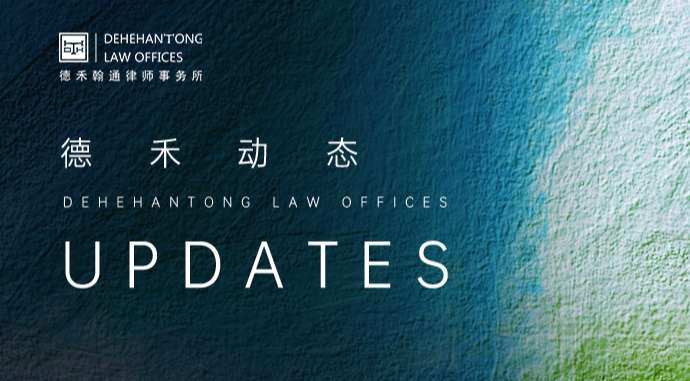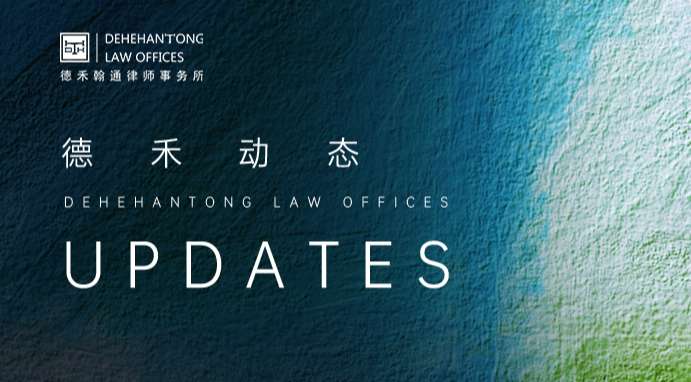Not just compliance! How can lawyers empower enterprises' ESG journey
Introduction: Crossroads Choice - New Propositions for Executives' ESG Strategies
At the crossroads of the business world, ESG has evolved from a "finishing touch" CSR slogan to a hard rule that determines the survival of enterprises. Bloomberg's "2024 Global ESG Outlook" shows that 81% of executives are concerned that lagging behind in ESG will directly result in the loss of market share. 84% of mergers and acquisitions incorporate ESG into their valuation models. The global $35.3 trillion in sustainable funds - accounting for one-third of the assets under management - is rewarding leaders with real money and punishing hesitators. Carbon emissions, human rights, and governance gaps can be transformed into financing costs, brand crises, and supply chain disruptions overnight. The traditional logic that "compliance equals safety" has become ineffective. The role of lawyers has thus evolved: from referees who "do not break the rules" to coaches who "outpace the race", breaking down abstract indicators into quantifiable, financeable and growth-oriented business strategies: through green bonds, supply chain responsibility clauses and incentive governance structures, ESG is transformed into strategic assets with lower interest rates, higher valuations and stronger customer stickiness. Executives must recognize that ESG disclosure is not the end but the starting point of a new round of competition. Whoever first uses legal tools to turn promises into cash flow will be able to seize the initiative in the dual choices of capital and consumers, transform compliance costs into growth dividends, and win the market ticket for the next decade.
Chapter One: ESG Pain Points for Executives: Why Is It Easier Said Than Done?
The significance of the ESG concept has become a global consensus. However, in practice, many business executives still face the predicament of "easier said than done". These challenges are not due to a lack of willingness, but rather a lack of clear implementation paths and professional technical support. As the "legal navigator" of enterprises, we deeply understand the core confusions of senior executives and are committed to providing solutions.
1. Regulatory fog and inconsistent standards - The compliance Dilemma of Global Enterprises
The global ESG regulatory trend is becoming increasingly fragmented. Different countries and regions (such as the EU's Corporate Sustainability Reporting Directive (CSRD) and the US SEC's climate disclosure Rules) are at different stages of development, and there is a lack of universal standards and unified classification methods. This has placed multinational enterprises under tremendous compliance pressure, and they must seek a clear implementation path among numerous contradictory requirements. The carbon reduction costs of high-tech enterprises (" high-tech enterprises ") and the lack of related tools have also become major pain points hindering their development.
Most executives view this regulatory dispersion merely as a risk and cost. However, from our professional perspective, this "fog of regulations" is not only a challenge but also a potential battlefield for "compliance arbitrage" and "first-mover advantage". Due to the inconsistent global regulatory standards, enterprises can leverage the global perspective of lawyers to establish a dynamic "risk map", identify and prioritize the jurisdictions with the highest risks, and systematize scattered compliance requirements through a unified legal framework. This forward-looking design not only reduces the blindness of compliance investment but also enables enterprises to seize the initiative before regulatory tightening, establish a strong compliance barrier, and thus gain a "leader" advantage in the industry.
2. High investment, hard to distinguish value - The ROI choice between "doing" and "not doing"
Implementing an ESG strategy usually requires significant investment, such as technological transformation, personnel training, and the construction of an information disclosure system, but the returns are not immediate and are difficult to quantify directly. This uncertainty between input and return has caused some managers to be troubled by "insufficient executive support" and "ambiguous career paths". The most urgent question for executives is: How to prove that the investment in ESG is worthwhile? How can "morality" be transformed into tangible "profits"?
The "intangible risks" of ESG are rapidly transforming into quantifiable "financial risks". The risk management framework has placed ESG risk on par with operational risk, credit risk and market risk as another comprehensive risk category. This means that "atypical" risks such as environmental crimes, supply chain risks, and greenwashing lawsuits are directly affecting the valuation and financial performance of enterprises. Therefore, our service is not merely about creating value, but rather helping enterprises transform these ESG risks, which were once considered "soft" and unquantifiable, into quantifiable and manageable financial indicators through rigorous due diligence and legal tools such as contract clause design. This is the most powerful persuasion for senior executives, as it transforms "uncertainty" into controllable "management variables".
3. "Responsibility Spillover" in the Supply Chain - How to Ensure the Safety and Resilience of Enterprises
As global legislation (such as the EU's CSDDD) extends corporate responsibility throughout the entire value chain, the supply chain has become a "hotspot" for ESG risks. Executives are generally concerned: How can we ensure that the complex global supplier network complies with our ESG standards? Once a supplier encounters problems, does the enterprise need to bear joint liability?
Supply chain transformation under the pressure of regulations is the key to achieving "endogenous resilience". We regard the obligation of "Due Diligence" stipulated in regulations such as the Corporate Due Diligence Directive (CSDDD) as an opportunity for enterprises to enhance the resilience of the supply chain. Lawyers embed strict ESG clauses in procurement contracts and grant enterprises the right to audit and terminate. On the surface, this is for compliance, but its deeper value lies in the fact that this legal tool can transform the ESG performance of upstream and downstream suppliers into a "market-oriented mechanism". It can effectively convey the ESG requirements of enterprises to the upstream and downstream, thereby achieving a "green expansion effect" throughout the entire supply chain. This inside-out transformation has fundamentally enhanced the risk resistance capacity of the supply chain and ensured the long-term operational security of enterprises. Its value far exceeds the simple scope of compliance.
4. Disclosure Risks and "Greenwashing" Traps - The "Sword of Damocles" of Brand Reputation
In the era of mandatory disclosure, every sentence of an ESG report may become legal evidence. False or exaggerated disclosure (i.e., "green washing" or "greenwashing") not only triggers regulatory penalties but may also lead to class-action lawsuits, causing irreversible damage to a company's reputation. The challenge that executives face is: How to strike a balance between insufficient disclosure and excessive promotion?
Compliance disclosure itself has a paradox: it is both a legal risk and an opportunity to win trust. Full disclosure of data can win the favor of investors and help improve returns and enhance the resilience of investment portfolios. The role of lawyers is precisely to address this paradox: through professional legal review, they ensure the accuracy and completeness of every statement in ESG reports, guarantee that promotional phrases such as "industry leading" are supported by reliable data, and ensure that negative events are disclosed fully and appropriately. We transform the potential legal risk point of "disclosure" into a reliable, transparent strategic asset that can create a premium for brand reputation.
Here is an overview of how our legal services can transform the challenges faced by executives into strategic value:
Chapter Two: A Complete List of ESG Legal Value Creation
Our service is not a lengthy list, but a strategic value proposal that spans the entire ESG journey of an enterprise. Each service is designed to combine the rigor of the law with the flexibility of business, bringing tangible returns to enterprises.
Architect's Blueprint: Building a solid ESG governance and compliance system
The successful implementation of ESG begins with a clear and stable governance structure. As the Thomson Reuters report points out, "Without focusing on governance, environmental and social elements cannot be achieved." Our service aims to transform the abstract ESG concept into the "fiduciary responsibility" and enforceable "internal constraints" that the board of directors and management must fulfill, addressing the execution predicament of "having the will but lacking the ability" from the source.
•ESG governance structure design: Assist enterprises in establishing ESG committees and clarify the division of responsibilities among the board of directors, management, and ESG working groups; Draft internal governance documents such as the "Charter of the ESG Committee" and the "ESG Management Measures".
•ESG system and policy drafting and review: Tailor or review a series of internal policies for enterprises based on international standards and local requirements in China, such as the "Environment and Sustainable Development Policy", "Supply Chain Social Responsibility and Human Rights Policy", etc.
•ESG Compliance gap analysis: By benchmarking against the latest domestic and international regulatory and standard requirements such as the EU CSRD and SEC climate disclosure rules, a comprehensive scan of the gap between the current situation of the enterprise and the compliance requirements is conducted, and a legal risk diagnosis report is issued.
2. The radar of due diligence: Locking in value and avoiding risks in transactions
In investment and mergers and acquisitions, ESG has evolved from an "add-on" to a "core risk control", which determines the "bottom line value" of the transaction. Through due diligence, we quantify hidden ESG liabilities (such as historical environmental pollution, non-compliant labor employment, and commercial bribery), and use legal tools to deduct them from transaction prices or set up compensation mechanisms. This is not only risk management, but also the direct protection and creation of transaction value.
ESG due diligence in M&A transactions: Comprehensively assess the ESG risks of the target company to provide a basis for transaction pricing and negotiations, and avoid the situation of "default upon purchase".
• ESG clause design in transaction documents: Set ESG-related statements and warranties in the "Equity Purchase Agreement", and design ESG compensation clauses to ensure that risks are fairly distributed between the buyer and the seller.
3. Brand Guardian: Compliant disclosure to win trust and capital favor
In this era of information transparency, only credible and verifiable stories can stand out. Our legal services offer a "legal health checkup" for a company's ESG story, enabling it to stand up to the triple scrutiny of regulators, investors and consumers.
• Legal review of ESG reports: Review the statements in ESG reports to ensure their accuracy and completeness and avoid the risk of "greenwashing". The key is to review whether the promotional language is supported by data and whether the disclosure of negative events is sufficient and appropriate.
• Responding to regulatory inquiries and certifications: Communicate with regulatory authorities on behalf of the enterprise in legal professional language to effectively manage legal risks during the investigation process.
4. The fortress of the supply Chain: Transforming external responsibility into internal resilience
Most enterprises regard regulations such as CSDDD as a burden in the face of them. Our legal services transform this external pressure into a systematic internal management upgrade, helping enterprises convert regulatory burdens into the "inner strength cultivation" of supply chain management.
• Supply Chain Code of Conduct and Contract Management: Draft the "Supplier Code of Conduct" for customers; Embed ESG clauses in the procurement contract, require suppliers to commit to complying with ESG requirements, and grant customers remedies such as the right to audit and the right to terminate.
• Supply chain due diligence and Audit: Design supply chain due diligence questionnaires; Participate in or guide on-site audits of high-risk suppliers; Provide legal rectification suggestions for the problems identified in the audit and offer evidence of "due diligence" for possible regulatory defenses.
5. The first line of defense in crisis management: Minimize the risk of disputes
When ESG risks evolve into actual conflicts, the value of lawyers lies not only in "extinguishing the fire", but also in "warning" and "rebuilding trust". We offer full-process legal crisis response support to help enterprises control the development of the situation and minimize legal and reputational losses.
• Administrative Investigation and Penalty Response: Represent the enterprise in responding to ESG-related administrative investigations by departments such as environmental protection and human resources and social security, and strive for the most favorable outcome for the enterprise.
• ESG-related litigation: Representing in tort lawsuits caused by environmental pollution, securities class action lawsuits due to ESG disclosure issues, etc.
• Crisis management legal support: In the event of a major ESG incident, provide full-process legal response support, including evidence fixation, internal investigation, and communication with regulators, etc.
6. Infusion of cultural genes: Integrate ESG awareness into the corporate DNA
No matter how perfect a strategy or system is, it still requires human execution. Insufficient understanding and support of ESG by senior executives is a common challenge. Our training services aim to address the confusion of senior executives at the ideological level, transforming ESG awareness from a "top-down" mandatory order into an "insideout" cultural consensus, and ultimately forming the sustainable development genes of the enterprise.
• Customized ESG legal training: Provide customized ESG legal training for the board of directors, management, and key employees, covering topics such as "ESG Regulatory Trends and Directors' Responsibilities" and "How to Avoid Legal Risks of 'Greenwashing'".
Chapter Three: How Do Lawyers Drive the ROI of ESG Strategies?
The question that executives care about most is: What can my investment bring in return? Our legal services precisely establish a causal relationship between ESG strategies and tangible business value, driving the return on investment for enterprises.
Reduce financing costs and win the favor of the capital market
Credible ESG performance has become a "pass" for the capital market. According to a study by Arabesque Partners, 88% of the cases indicated that stock prices are directly proportional to the level of sustainable development practices. Furthermore, 85% of investors believe that ESG helps improve returns and enhance the resilience of investment portfolios. Through rigorous governance structure design and compliant disclosure, lawyers help enterprises establish a credible ESG image, thereby attracting more long-term capital that adheres to ESG investment standards, reducing financing costs, and gaining a differentiated advantage in the highly competitive capital market.
2. Enhance supply chain resilience and ensure operational security
Legal tools can transform external regulatory pressure into internal operational advantages. A study published in the journal of Shanghai University of Finance and Economics in April 2025 indicates that ESG can enhance overall competitiveness and improve supply chain resilience and security through the "green expansion effect" of the supply chain. Our legal services help enterprises effectively convey ESG requirements to suppliers through supply chain due diligence and contract term design, fundamentally reducing the risk of operational disruption and ensuring the long-term stability of business.
3. Create brand reputation premium and win market trust
In the era of information transparency, corporate reputation has become the most core "intangible asset". 81% of executives are worried that lagging behind their peers in ESG will cause them to lose market share. Through legal reviews of ESG reports, lawyers help enterprises avoid the "greenwashing" trap and ensure the authenticity and credibility of their external disclosures. This kind of transparency and integrity can not only avoid legal risks, but also establish a responsible corporate image in the minds of consumers and the public, thereby achieving brand reputation premium and winning market loyalty.
4. Forward-looking risk management, turning challenges into first-mover advantages
ESG is a "new thing", and its risks are difficult to quantify. A lawyer's strategic vision can help enterprises "plan ahead" and turn risks into opportunities. Through comprehensive risk scanning and due diligence, we help enterprises identify "minefields" in advance and complete internal system upgrades and institutional construction before regulation is fully tightened. This enables enterprises to transform from passive compliance providers to active leaders, seizing the initiative in future competition and gaining a "leading edge".
Conclusion: From Strategy to Action - Join Us for a Sustainable Future
ESG has risen from a marginal topic to the core of corporate strategy. Facing multiple challenges such as a complex regulatory environment, high transformation costs, extended supply chain responsibilities, and disclosure risks, enterprises urgently need to shift ESG from passive compliance to active value creation. By building a robust governance structure, embedding legal tools in transactions and supply chains, and prudently managing disclosure risks, ESG is no longer merely a cost item but a quantifiable, financable, and growable strategic asset.
In the global wave of sustainable development, only by deeply integrating ESG into business logic can enterprises achieve long-term stable growth. The synergy between law and business is not only a necessary means to address challenges but also a key engine for shaping future competitiveness.















